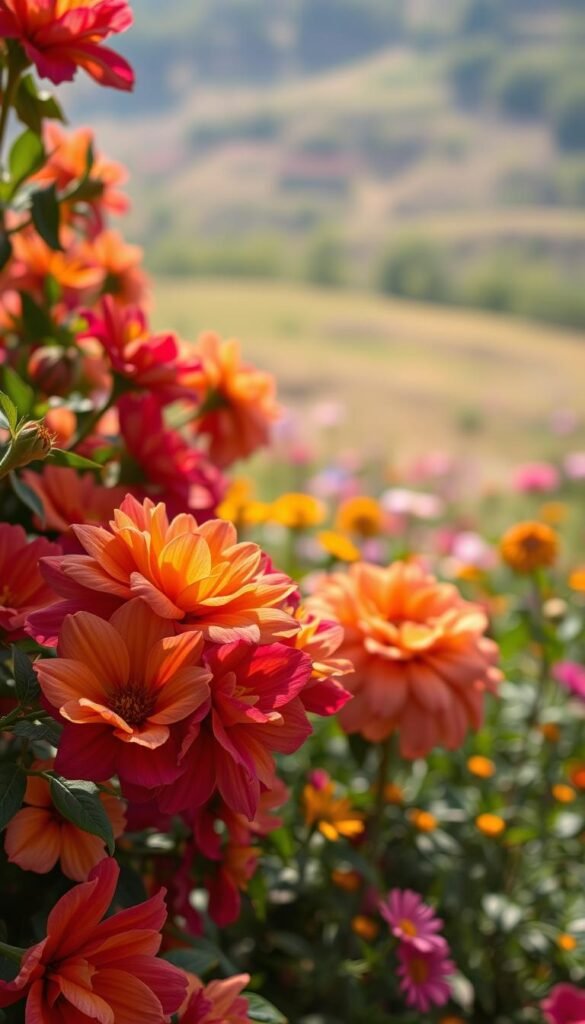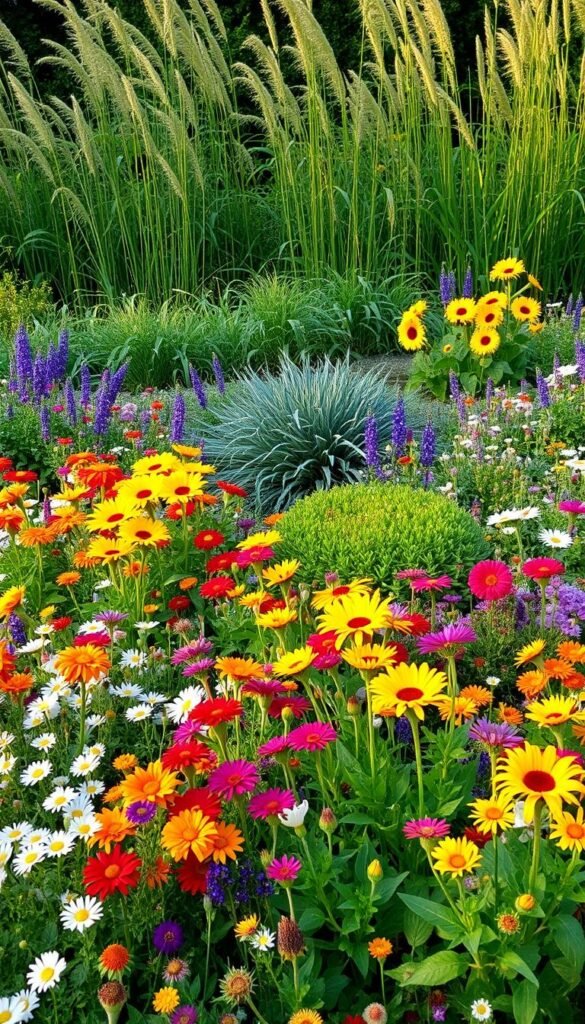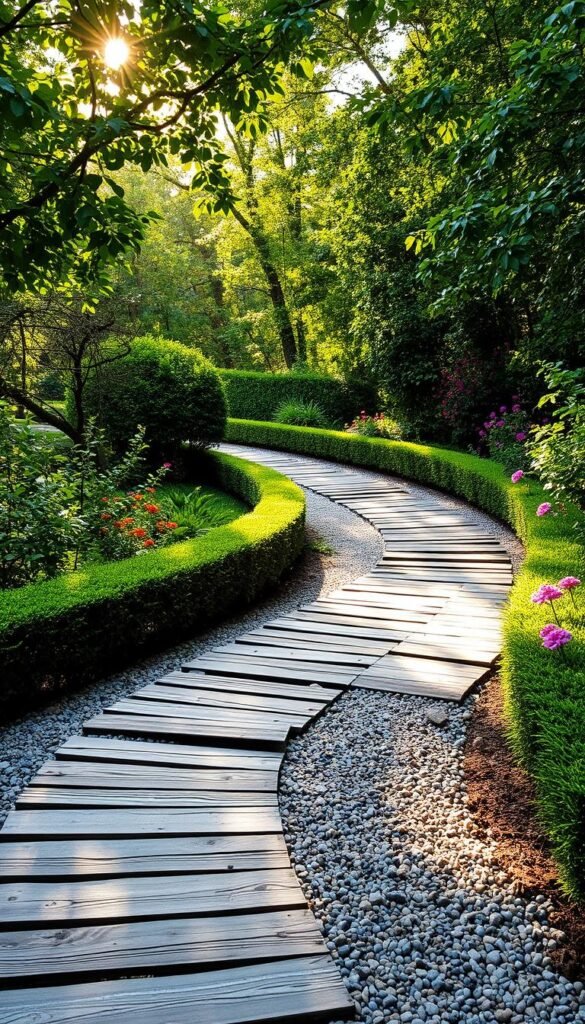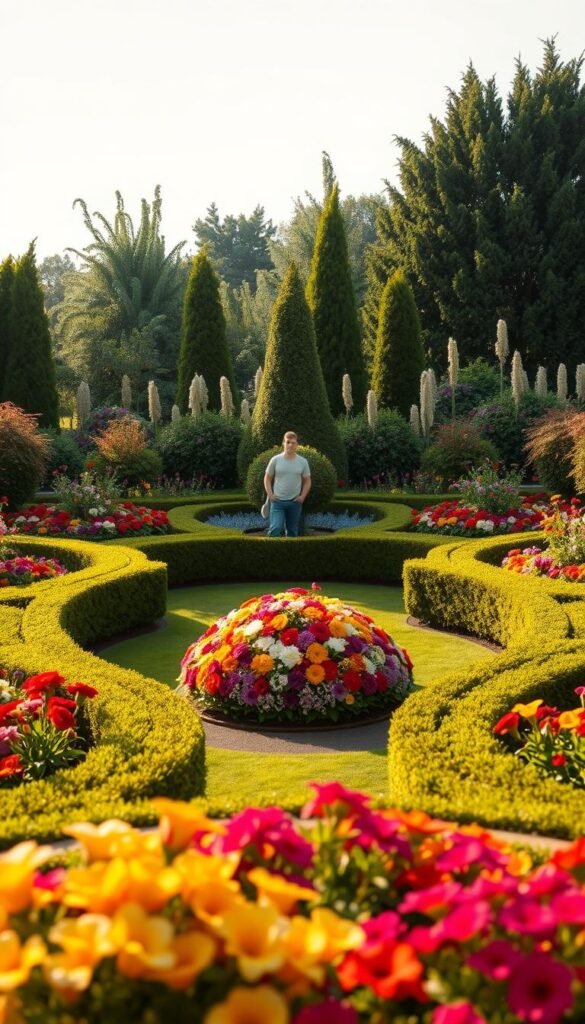Imagine stepping into your backyard and finding a vibrant space bursting with color from early spring until autumn’s first frost. With thoughtful planning, you can create an outdoor area that balances visual appeal with practical functionality. Structured layouts help organize plants in ways that maximize their impact while ensuring a steady supply of fresh-cut stems for arrangements.
The secret lies in selecting plants that bloom at different times, creating a seamless transition of hues and textures. By grouping species with complementary growth habits, you’ll maintain order without sacrificing natural charm. This approach not only elevates your space’s beauty but also supports bees, butterflies, and other beneficial visitors.
Whether you’re working with sprawling beds or compact corners, strategic placement makes all the difference. You’ll discover how proper spacing and height variations create depth, turning simple plantings into eye-catching displays. Every choice matters—from color pairings to bloom schedules—when crafting a living canvas that evolves through the seasons.
Ready to transform your outdoor area into a harmonious blend of form and function? Let’s explore the techniques that turn ordinary yards into extraordinary sources of natural artistry.
Getting Started with Your Flower Garden Vision

Creating a thriving outdoor area begins with knowing your landscape’s unique conditions. Start by sketching a rough map of your property, marking areas that get full exposure versus partial shade. This simple planning step helps match plants to their ideal growing spots while avoiding costly mistakes.
Sunlight: Your Garden’s Fuel
Watch how light shifts across your space during daylight hours. Most vibrant bloomers demand 6-8 hours of direct sun—like zinnias or sunflowers. Shady corners? Consider leafy greens or colorful container gardening options that adapt to lower light.
Clarifying Your Purpose
Ask yourself: Do you want fresh bouquets weekly? A sanctuary for hummingbirds? Your answers shape plant choices and layout. Low-maintenance designs might use hardy perennials, while cutting beds need succession planting for continuous harvests.
Balance aesthetics with practicality. A cottage-style mix feels playful yet requires more upkeep than structured rows. Remember, your outdoor space should reflect both beauty and your available time for care.
Preparing Your Garden Beds and Soil

Healthy soil forms the backbone of any successful planting area. Before introducing new greenery, take time to analyze your earth’s composition. This critical step ensures your chosen species receive the nutrients they need to flourish.
Soil Testing and Amendment Basics
Begin with a professional soil analysis. Local cooperative extension offices provide affordable kits that measure pH balance and detect nutrient gaps. One gardener shared: “Adjusting my clay soil’s acidity transformed struggling plants into thriving specimens within weeks.”
Most flowering varieties prefer slightly acidic conditions (6.0–7.0 pH). Use these test results to determine which organic materials to mix in:
| Amendment Type | Best For | Application Rate |
|---|---|---|
| Compost | Improving drainage | 3-inch layer |
| Aged Manure | Boosting nitrogen | 2-inch layer |
| Leaf Mold | Retaining moisture | 1-inch layer |
Work amendments into the top 8–12 inches of earth using a broadfork or tiller. This creates ideal growing conditions while preventing soil compaction. Regular testing every 2–3 years maintains fertility as plants deplete nutrients over time.
Well-prepared beds reduce water waste and pest issues, letting you focus on cultivation rather than damage control. Your efforts now will pay off with vigorous growth and abundant color displays.
Choosing the Ideal Location and Layout Strategies
Positioning your plants strategically transforms ordinary spaces into breathtaking displays. Start by analyzing three core elements: sunlight patterns, accessibility, and existing landscape features. These factors work together to create a garden layout that thrives visually and functionally.
Sun Exposure and Practical Access
Track how sunlight moves across your space for 2-3 days. Note areas receiving 6+ hours of direct light—ideal for sun-loving varieties. Shady spots near walls or trees? They’re perfect for shade-tolerant species or aesthetic accents that elevate your space.
Consider these practical needs when planning:
| Factor | Purpose | Examples |
|---|---|---|
| Water Access | Simplify irrigation | Within 10 ft of hose |
| Pathways | Ease maintenance | 18-inch wide walkways |
| Viewing Angles | Maximize visibility | Visible from patio/windows |
Existing trees or fences can frame your layout beautifully. A gardener in Texas shared: “Using my stone wall as a backdrop made my climbing roses pop against the neutral surface.” Match plant heights to their position—taller varieties belong at the back of borders or center of island beds.
Balance beauty with practicality. Your final layout should make daily care effortless while creating views you’ll love from indoors and out. Test different arrangements with stakes and string before planting to avoid costly adjustments later.
Flower Garden Design Tips: Showcasing Blooms in Structured Layouts

Transform your outdoor space into a living masterpiece by balancing artistic expression with nature’s rhythms. Thoughtful arrangement of plants creates eye-catching displays that evolve daily while maintaining organization. This structured approach lets you highlight nature’s beauty without compromising functionality—perfect for those exploring personalized growing styles.
Mastering Color Relationships and Tactile Contrasts
Pair bold hues like deep purple salvia with golden marigolds to create striking contrasts. Soft pastel combinations work well in calming meditation corners. One landscaper notes: “Texture acts as the unsung hero—lacey ferns beside spiky yucca leaves add drama even when blooms fade.”
Consider these combinations for visual impact:
| Color Scheme | Texture Pair | Focal Element |
|---|---|---|
| Warm tones | Feathery + Bold | Ornamental Grasses |
| Cool palette | Glossy + Matte | Sculptural Urn |
| Mixed accents | Spiky + Rounded | Water Feature |
Synchronizing Nature’s Calendar
Keep your space vibrant by sequencing plants’ peak periods. Early crocuses give way to summer phlox before autumn asters take over. Track bloom cycles using a simple chart:
| Season | Early Bloomers | Mid-Season Stars | Late Performers |
|---|---|---|---|
| Spring | Tulips | Peonies | Foxgloves |
| Summer | Daylilies | Zinnias | Hydrangeas |
| Fall | Sedum | Goldenrod | Chrysanthemums |
Rotate container plants seasonally to maintain fresh accents. This strategy ensures your space remains dynamic while supporting pollinators through changing weather patterns.
Planning and Planting for Year-Round Interest

Want your outdoor space to look lively every month? The secret lies in pairing plants with different lifespans and bloom cycles. This smart mix keeps your beds vibrant through snowfalls and heatwaves alike.
Building a Living Calendar
Perennials act like old friends—they return each year with minimal fuss. Think black-eyed Susans or lavender. These plants form your space’s foundation, growing fuller over time. One gardener told us: “My coneflowers now cover twice the area they did three summers ago!”
Annuals are your seasonal artists. Petunias and marigolds explode with color quickly, perfect for filling bare spots. Use them to test new color schemes or refresh tired corners.
| Plant Type | Lifespan | Best For |
|---|---|---|
| Perennials | 3+ years | Structure |
| Annuals | 1 season | Instant impact |
Follow this seasonal roadmap:
- Spring: Daffodils + pansies
- Summer: Daylilies + zinnias
- Fall: Asters + ornamental kale
Rotate annuals each season while letting perennials mature. This approach maintains visual interest while reducing yearly planting work. Your space becomes a living scrapbook that changes with nature’s rhythm.
Creating Structured Flower Garden Layouts

Clear boundaries transform chaotic patches into intentional displays. By defining edges and access points, you create a framework that enhances both beauty and usability. This approach turns wild growth into organized beauty while simplifying care routines.
Pathways and Borders That Work Harder
Start with durable edging materials like steel strips or natural stone. These barriers keep grass roots out while adding crisp lines that elevate your space’s appearance. A landscaper in Oregon shared: “Using recycled brick borders cut my weeding time in half and gave my beds museum-quality definition.”
Pathways serve dual purposes—they guide visitors and protect plants from trampling. Consider these popular options:
| Material | Benefits | Best For |
|---|---|---|
| Crushed Gravel | Quick drainage | Sloped areas |
| Flagstone | Formal appeal | Entryways |
| Wood Chips | Natural look | Woodland themes |
Vary bed heights using raised planters or mounded soil. This creates depth that draws the eye upward and outward. Narrow beds near walls allow easy pruning, while wider central plots showcase statement plants.
Maintain 18-inch walkways for comfortable movement. These spaces become part of your design when lined with low-growing herbs or seasonal annuals. Your layout now works as hard as you do—beautiful yet utterly practical.
Innovative Ideas for Small or Container Flower Gardens
Limited square footage doesn’t mean sacrificing vibrant displays—creative solutions can turn even the smallest areas into blooming retreats. Vertical techniques like trellises and wall-mounted planters let you grow upward, freeing ground space for seating or decorative accents. A gardener in Brooklyn shared: “My fire escape became a floral waterfall using hanging baskets of trailing lobelia and compact petunias.”
Choose dwarf varieties like miniature roses or petite dahlias that thrive in pots. Ensure containers have drainage holes and use lightweight potting mix to prevent waterlogging. Pair shallow-rooted annuals with deeper planters for herbs like thyme, creating edible-floral combos.
Stagger planting times across pots to maintain color from spring through fall. Try this rotation:
- Early season: Pansies and snapdragons
- Mid-summer: Dwarf zinnias and marigolds
- Late blooms: Ornamental peppers and chrysanthemums
Multi-level stands or patio container gardening setups let you grow dozens of plants in tight spaces. Combine tall urns with mid-height planters and trailing window boxes for dynamic layers. These ideas prove that constraints spark creativity—your tiny balcony could outshine larger yards with smart planning.
For more inspiration on maximizing limited areas, explore successful garden design principles adapted for urban settings. Remember: every windowsill and railing offers potential when approached with innovation.
Integrating Pollinator-Friendly Practices into Your Garden Design
Your outdoor space can become a vital refuge for nature’s hardest workers while maintaining its visual charm. Over 75% of flowering crops rely on animal helpers for reproduction, making your choices crucial for local ecosystems. By blending beauty with ecological awareness, you’ll create a living sanctuary that hums with life.
Choosing Blooms That Welcome Beneficial Visitors
Focus on variety when selecting plants. Mix early-spring crocuses with summer phlox and fall asters to provide continuous food sources. Open-faced types like sunflowers and coneflowers give bees easy access, while native species—such as milkweed—boost monarch populations by up to 60%.
Include flowering shrubs and herbs to support different pollinator needs. A diverse plant palette hosts 29x more soil microbes than non-natives, creating healthier growing conditions. This approach turns your space into a buzzing hub that changes with the seasons.
Smart Pest Management That Protects Allies
Skip harsh chemicals that harm helpful insects. Instead, try companion planting—marigolds deter aphids near roses, while dill attracts predatory wasps. If pests appear, use organic solutions like neem oil or soap sprays sparingly.
Add shallow water dishes with stones for drinking spots. Mulch beds to reduce watering needs by 35% while sheltering ground beetles. These strategies maintain balance, letting nature handle most tasks without toxic interventions.
By prioritizing pollinators, you’ll enjoy vibrant displays while sustaining local wildlife. Every plant choice becomes an act of stewardship, blending responsibility with the joy of nurturing life.






